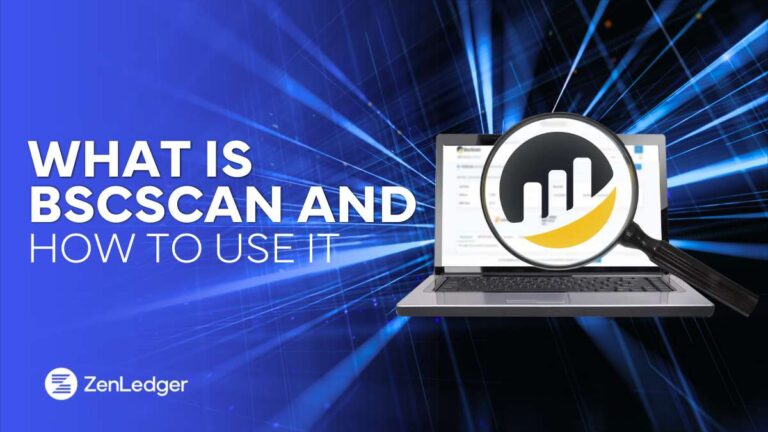Global finance is on the cusp of a historic transformation with the rise of digital assets and cryptocurrency. This digital asset class blurs the lines between highly centralized traditional finance (TradFi) and decentralized finance (DeFi).
While traditional finance offers a familiar, user-friendly experience, DeFi promises a more transparent and accessible financial system. Centralized Finance models are emerging to bridge the two worlds.
This blog post will explore the convergence of CeFi and DeFi, examining each system’s strengths and weaknesses and how they combine to create a new era for financial services.
Decentralized Finance’s (DeFi) Rocky Real World Transition
As you know if you are reading this, DeFi is peer-to-peer finance powered by blockchain technology. It eliminates the need for intermediaries, allowing users to interact directly with each other through smart contracts (self-executing code) on a blockchain.
This communication fosters transparency and innovation while opening financial services to a broader global audience.
However, DeFi can be complex for newcomers, carries inherent security risks, and lacks the regulatory oversight governments require for full participation in the global financial system.
Understanding Centralized Finance (CeFi)
Centralized finance elements exist in both traditional finance and the digital asset world. Some sources confuse TradFi with CeFi, yet you will also hear about CeFi in the context of centralized exchanges in crypto.
Here’s a breakdown to clarify:
Traditional Finance (TradFi) refers to the established financial system, with institutions like banks and brokerages acting as intermediaries. These systems are fully centralized, heavily regulated, and operate within a defined legal framework.
Centralized Cryptocurrency Exchanges are part of the CeFi umbrella. Centralized exchanges occupy a middle ground between traditional finance and DeFi. These platforms facilitate the buying and selling of cryptocurrencies and fiat conversion.
While they deal in crypto, unlike traditional exchanges that trade stocks and bonds, they share some characteristics with CeFi institutions:
Centralized Control. CeFi exchanges act as intermediaries, holding user funds and crypto assets. This central location creates a single control point, similar to traditional banks.
Regulation. Increasingly, the cost of entry into the TradFi world for CeFi exchanges is to accept rules that bring them closer to existing compliance requirements.
CeFi exchanges aren’t part of the traditional financial system because they don’t trade traditional assets. However, their centralized structure and increasing regulatory oversight bridge the completely decentralized world of DeFi and the familiar, regulated environment of conventional finance.
The Friction Between CeFi and DeFi
The core philosophies of CeFi and DeFi create an inherent tension between the two systems. CeFi thrives on centralization, with established institutions acting as gatekeepers and ensuring compliance with regulations.
Conversely, DeFi champions decentralization to empower individuals and remove the need for trusted third parties.


This clash of ideologies leads to several friction points:
Regulatory Scrutiny. Governments and regulators view the lack of control in DeFi with suspicion. Concerns about money laundering, fraud, and consumer protection lead them to impose stricter regulations on DeFi platforms.
These regulations often directly contradict the core principle of DeFi, which seeks to operate outside the traditional financial framework.
Security Vulnerabilities. While blockchain technology offers inherent security advantages, DeFi protocols are still susceptible to hacks and exploits, especially with wallets and users sharing their private keys.
The absence of centralized control makes it difficult to recover stolen funds, creating a significant risk factor for DeFi users.
These risks contrast with CeFi institutions, which may have more robust security measures and insurance policies.
Varying Degrees of Decentralization. It’s important to note that not all blockchains are created equal. Some DeFi protocols operate on blockchains with permissions, where participants are vetted and identified.
This variety creates a middle ground between the complete anonymity of public blockchains and the centralized control of CeFi. However, it also raises questions about how “decentralized” these DeFi applications genuinely are.
The friction between CeFi and DeFi highlights the strengths and weaknesses of each system.
While DeFi offers innovation and accessibility, it struggles with friction in the client experience and security holes. CeFi provides a familiar and secure environment but can be slow to adapt and lacks the openness of DeFi.
The critical question becomes: can these two seemingly opposing forces find a way to work together?
Why the Convergence of CeFi and DeFi Is Important for Mainstream Adoption
Despite its revolutionary potential, DeFi faces several hurdles that prevent it from achieving widespread adoption. These limitations are complexity, security, and user experience. Here’s how CeFi’s strengths can address these challenges and pave the way for DeFi’s mainstream success:
Overcoming Complexity. DeFi often feels like the Wild West of finance. Navigating complex protocols, understanding smart contracts, and managing private keys can be daunting for new users. CeFi institutions, with their user-friendly interfaces and established customer support, can bridge this gap.
Imagine a platform combining DeFi’s transparency and innovation with a traditional bank’s intuitive design and educational resources. The leading crypto exchanges are working toward this goal; their websites have improved dramatically in the last five years. Better UX lowers the barrier to entry for DeFi, attracting a broader audience of users.
CeFi’s established infrastructure can overcome the limitations of individual blockchains, potentially enabling DeFi protocols to leverage cross-chain services for wider asset accessibility.
Enhancing Security. Decentralization is a double-edged sword. While it eliminates the risk of a single point of failure, it also makes DeFi vulnerable to hacks and exploits.
CeFi institutions, with robust security infrastructure and regulatory compliance measures, may offer a more secure environment for DeFi users. These security measures could involve integrating CeFi custodial services with DeFi protocols, allowing users to benefit from DeFi’s features without managing their private keys.
Building Trust and User Experience. DeFi currently lacks the established trust and user experience the mainstream associates with CeFi institutions. Regulations and consumer protection measures within CeFi provide users with peace of mind.
CeFi platforms prioritize user experience, offering intuitive interfaces and familiar workflows. By incorporating these elements into DeFi, the user experience can be significantly improved, fostering trust and encouraging wider adoption.
The convergence of CeFi and DeFi isn’t about one system replacing the other. Instead, it’s about leveraging each system’s strengths to create a more robust and inclusive financial ecosystem.
CeFi’s user-friendliness, security, and established infrastructure can act as a bridge for DeFi, allowing it to reach a mainstream audience. This collaboration represents a win-win scenario, paving the way for a new era of innovative and accessible financial services.
Real-World Movement Toward Centralization
The January 2024 approval of spot ETFs in the US indicates a shift in how regulators view custody and oversight for cryptocurrency holdings within a regulated investment product.
Here’s how movement with ETFs relates to centralization:
Traditional ETFs track underlying assets like stocks or bonds held by a custodian, typically a large financial institution. This centralized custody model provides a layer of oversight and security for investors.
Bitcoin Spot ETFs. Unlike futures-based Bitcoin ETFs, spot ETFs directly hold actual Bitcoin. While the details might vary between ETFs, some centralization is likely involved in storing and managing these Bitcoins.
Here are some possibilities:
Qualified Custodians. The SEC might require spot ETF issuers to use qualified custodians with robust security measures and regulatory compliance. These custodians would act as centralized entities responsible for safeguarding the Bitcoin holdings.
Sub-Custody Solutions. The ETF issuer might partner with a sub-custodian specializing in cryptocurrency security. This sub-custodian would introduce a centralized element into the process, even though the overall structure might be more transparent than a traditional custodian.
Overall Impact. Approving spot ETFs doesn’t eliminate the core principles of DeFi, but it does require a degree of centralization for custody and oversight purposes. It aligns with DeFi-CeFi convergence, where elements of both systems can coexist within a regulated framework.
Moving Ahead with the Convergence of CeFi and DeFi
The convergence of CeFi and DeFi represents a fundamental shift in the financial landscape. While both systems have their strengths and weaknesses, collaboration offers the potential for a more robust, secure, and inclusive financial ecosystem.
Are you a crypto investor? Managing your crypto holdings for tax time can be a complex task. ZenLedger can help! Our platform simplifies the process by automatically aggregating your transactions across wallets and exchanges, calculating your capital gains or losses, and generating the necessary tax reports. Get started for free today and take the stress out of crypto taxes!
Disclaimer: The information provided is for general informational purposes only and should not be construed as professional advice. Please seek independent legal, financial, tax, or other advice specific to your situation.



